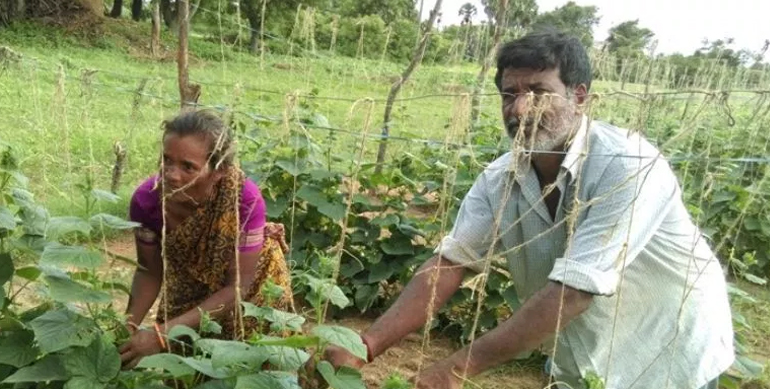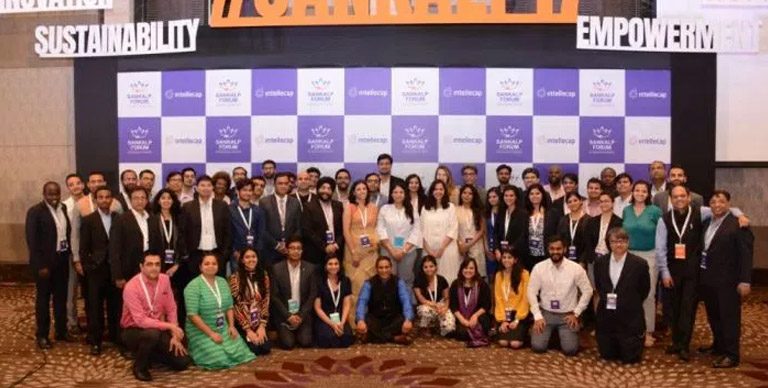From Planning to Execution: Using Value Chain Approach to Lending to Smallholder Farmers and Agribusiness
Santhavasal, a small village in Trivannamalai district in Tamil Nadu State in India has a vibrant dairy industry. On the supply side, several hundred individual farmers – most of them women and small dairy owners – supply milk to around 900 milk aggregators every day. On the demand side, aggregators collect, transport and sell milk to chilling plants in and around the district, forming a vital link between the dairy farmers and the market. The aggregators require capital to make timely payments to the farmers and invest in productive assets; but they are often cash-strapped. Most of them secure high-cost loans from informal sources, who have served their financial needs for a long time. This system holds true not just for the aggregators in the dairy sector in Santhavasal, but for a majority of the small- and medium-sized agribusinesses across India.
With large-scale government focus on agriculture sector and priority sector lending norms in India, one would think credit is reasonably accessible. However, for many agribusinesses and smallholder farmers with neither a long credit history nor the ability to provide collateral, there is limited or no access to loans. Microfinance institutions and formal sector banks alike have been unable to adequately meet the financial needs of agricultural value chain players, leaving a “missing middle” of underserved agribusinesses and smallholder farmers.
With over 118 million farmers in India, it’s important to understand what holds back the financial institutions in India from lending to them and other agribusinesses across the supply chain. Financial institutions lack the agricultural expertise needed to assess smallholder needs and to design appropriate financial products, leading to a higher perceived risk.
Typically, lenders evaluate creditworthiness based on individual farmer’s capacity and not the farmer’s place in the value chain. For instance, in the dairy business, financial institutions forecast an individual farmer’s cashflow based on the sales and profitability rather than on the transactional relationships and volume of business of various actors in the value chain. Assessing creditworthiness based on the sales and profitability approach is less comprehensive, as value chains may collapse when some actors exit due to poor profits; adding high risk for the lender.
Lack of financial data about the agribusinesses and smallholder farmers makes it even more difficult to adopt conventional methods of credit assessment. Most plain vanilla financial products are ill-suited to the cash flow requirements of an agribusiness, which is often cyclical in nature.
All of this begs the question: Given the uncertainty and risks, are financial institutions capable of extending credit that is low cost, less risky and highly accessible to agricultural value chain actors in India? Where most financial institutions see a challenge, we atSamunnati saw an opportunity in lending to smallholder farmers and agribusinesses. Drawing from years of experience in the banking and agriculture sector, we developed a multi-layered, lending solution to manage risk effectively. Some of the major product and process innovations we implemented include:
Value Chain Approach: While evaluating agribusinesses and smallholder farmers, it is essential to make decisions about financing based on the strength of the buyer-seller relationship. Before selecting our potential customers, we invest time in developing intimate knowledge of value chains and buyer-seller relationships to gauge future business cash flow. In Tiruvannamalai, for instance, we conducted extensive surveys to understand the transactional relationship between dairy farmers and aggregators, the tenure of the transaction cycle, as well as the dimensions of profit and risk in the value chain. This approach enabled us to properly align the delivery of customized, low-risk financial products and incorporate insurance to the needs and priorities of dairy farmers and aggregators in the value chain.
Technology Driven: We realized that no matter how well-designed a financial product may be, lending to smallholder farmers in rural areas is a difficult commercial prospect. We wanted to make our financial service delivery process simple and paperless. We enabled our field agents with mobile technology to identify eligible customers and perform cash flow analysis; and in the process, reduce loan errors and turn-around time in loan processing.
In addition to using a front-end technology, we set up local strategic branches focused on one or more set of agri-stakeholders, which we refer to as “points of high impact.” We also are identifying new “channels of high impact” by working with farmer organizations or retailers to provide credit to a large group of smallholder farmers.
Beyond Traditional Collateral: The farming segments we target usually have little or no collateral to offer. In such cases, we have developed a novel form of guarantee, wherein a rural producer company or aggregator who buys from smallholder farmers, serves as the guarantor for each farmer member who borrows from Samunnati. And, as noted above, we make financing decisions based on buyer-seller agreements rather than traditional collateral – enabling us to extend credit to larger farmer groups.
Cashless Operations: After sanctioning loans to our customers, it was vital to mitigate any risks associated with cash handling. We made our operations cashless from day one by disbursing loans directly to the customer‘s bank account. In cases where the customer did not have a bank account, we encouraged them to open a savings account.
The loan payments are collected through a direct debit to the customer’s account through the NACH platform. Depending upon the crop cycle, we also collect from the aggregators by deducting the loan amount from the produce sale amount, which is deposited into a customer’s loan account with Samunnati.
OUR IMPACT
By taking a value chain approach to lending, we have been able to improve the efficiency of our operations, reduce loan processing time, ensure timely repayments of loans, and consolidate linkages among various actors in the agriculture sector. This multi-layered approach has helped us in customizing loan and insurance products to cater to the specific working capital requirements of agribusinesses and farmers. Samunnati has extended loans to over 2,500 smallholder farmers and agribusinesses across various crop value chains since we started operations in November 2014, with a total cumulative disbursement of INR 17 crore (around USD $2.52 million, as of mid-February 2016).
We believe that providing low-cost, low-risk loans to improve productivity and income of smallholder farmers covers just one part of value chain financing. The next step for us is structuring innovative loan products to enable agribusinesses and farmer organizations to build catalytic infrastructure such as warehousing, processing units and cold storage facilities – helping them generate robust and regular cash flow. By improving the profitability of actors in the value chain sustainably, we hope to make them not only creditworthy but also capable of effectively demanding and absorbing financial services.
In the meantime, we are keen to hear your experiences in dealing with challenges in agriculture financing, and innovative solutions to mitigate them.








